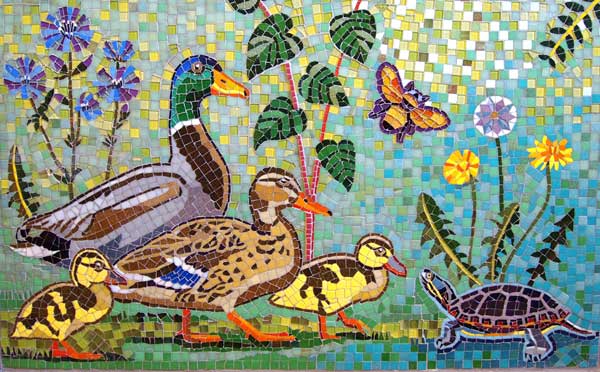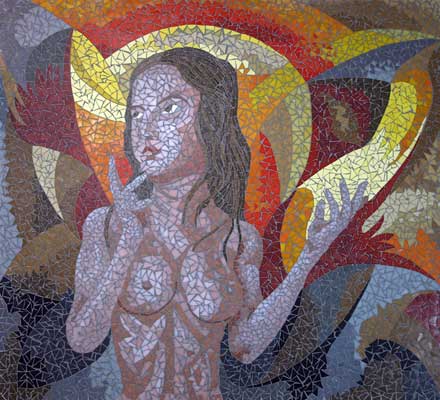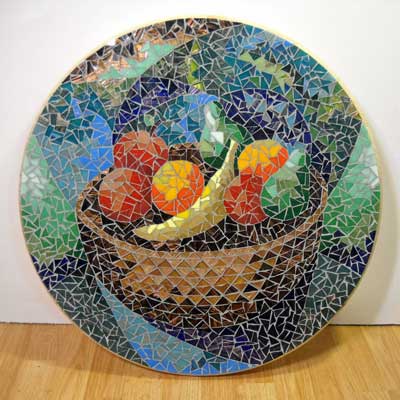
Learn by Looking
The best art is ultimately derived from looking at nature, but nothing seems to inspire an artist more than looking at great artwork by other artists. The reasons are simple: There is the competitive urge to create something even better, but there is also the discovery of new ways of seeing or rendering, a humble realization that the artist has done something in a way that hasn’t occurred to the viewer before.
The amazing thing about art is that this phenomenon occurs all the time, including when experienced professional artists look at naive art or art made by little children.
When artists browse other artists, there is a cross-fertilization of ideas where the synthesis is greater than the sum of the parts. There is the thought, “I can’t wait to do that myself and do it in my own way.”
Mosaic art is particularly suited for casual study by other artists because unlike painting, there are no hidden layers or semi-translucent layers and everything is visible as it was laid down. While a novice might benefit from classes or books for learning the best way to cut tile or transfer patterns or apply grout, he or she can learn more or less everything there is to know about the design merely by looking at it, including that critical element of style that is andamento, which is best expressed as the arrangement of tile in parallel or concentric work lines to suggest motion.

Triangular Tesserae

Venus of the Fallen Leaves mosaic art by David Cruise, 2012-2013. 35.75 inches x 39.75 inches, Vitreous glass mosaic tile on wood.
 Fruit Bowl mosaic art by David Cruise, 2012.
24 inches diameter, Metallic, Vitreous glass mosaic tile on wood
Fruit Bowl mosaic art by David Cruise, 2012.
24 inches diameter, Metallic, Vitreous glass mosaic tile on woodNormally I dislike mosaics made with triangular tesserae because they seem to be used by artists who aren’t as concerned with using andamento (arrangement of tiles) in rows or concentric rings to create a sense of flow or motion, which is a great source of visual interest in mosaic artwork, but David Cruise’s work really caught my eye.
David creates visual interest in localized areas of his mosaics by using contrasting colors and by contrasting light and dark areas. Notice how light-and-dark contrast naturally catches the eye and makes different elements more distinct. I also like how the andamento of the triangular tesserae creates a woven basket texture in the fruit bowl, however unintentional that might have been.
It is also worth mentioning that you can have the tile close together with minimal grout or no grout (if your mosaic is indoors and not subject to moisture). If there is no groutline, the artist needs to be more conscious of varing his or her colors in order to call attention to individual tiles and break up visual monotony. This can be done by mixing two or three similar colors or shades of a color instead of using all the same color, which is what Yetti has done in the background areas of her magical mosaic. David uses this approach to show depth and shading in his apples and oranges and other fruit and the torso of the female figure.
Mixed-Media Mosaic
There isn’t any need to limit yourself to just one type of material in making a mosaic. Different types of glass, ceramic and stone can be used together in the same piece in what is known as mixed-media mosaic.

More Great Mosaic Art
One of the largest collections of contemporary mosaic art online can be viewed at our Mosaic Artists Gallery. For a discussion of how to create photo-realistic mosaics and mosaic portraits, plus some great examples, see our page of Mosaic Portraits. For examples of mosaics that are whimsical and fresh without being tired or cliche, see our page of Fun Mosaic Art. For examples of using different types of materials in the same mosaic, check out our page of Mixed-Media Mosaic Art.